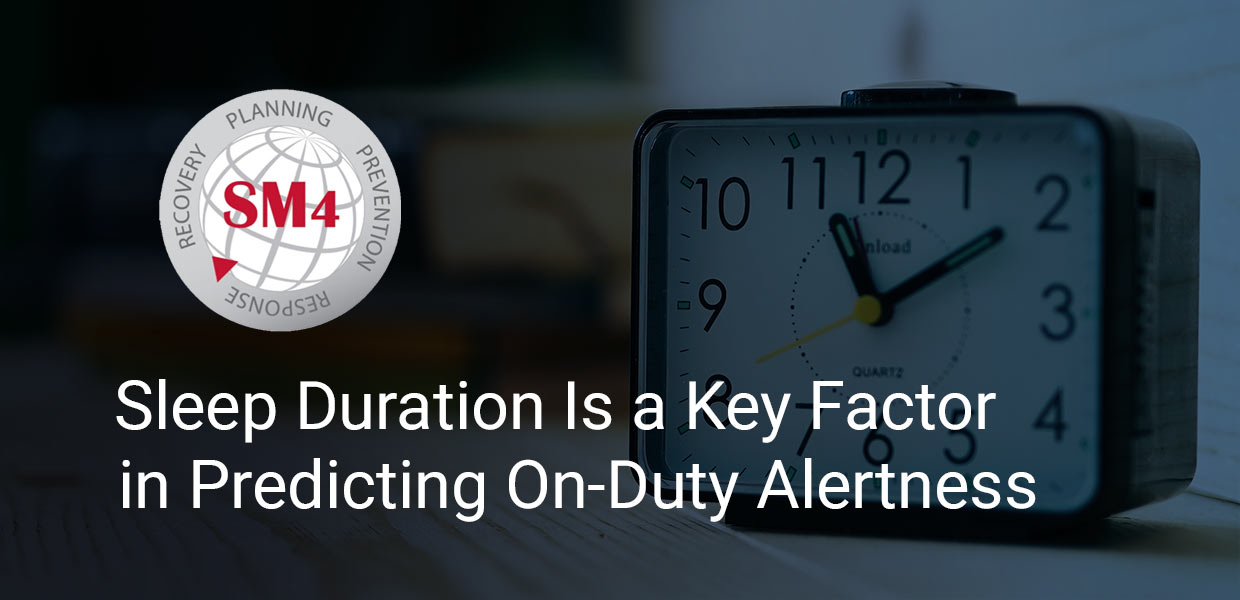
Sleep Duration Is a Key Factor in Predicting On-Duty Alertness
Written for Global Aerospace by Matthew van Wollen, Pulsar Informatics
After a poor night of sleep, it is common to feel tired, sluggish and even irritable. More important for air operators, poor sleep is also associated with increased fatigue—which can directly impact employee performance and put lives at risk.
New research just published in the journal Sleep Advances quantifies how much-reduced sleep translates into increased risk.
An Important Study on Sleep and Fatigue
The research was conducted by Pulsar Informatics in coordination with a customer performing air medical transport operations. It used the Psychomotor Vigilance Test (PVT) to objectively assess fatigue-related changes to alertness resulting from inadequate sleep, extended wakefulness and other issues that impact both sleep quality and quantity.
PVT measures an individual’s reaction time to stimuli that occur at random intervals and therefore is an excellent measure of vigilant attention. Obtaining a high score on the PVT (commonly known as failing the test) is associated with impaired alertness. The elevated risk threshold is a PVT score of 12, which corresponds to 12 errors during the test. An error occurs either as a false start (premature response) or a lapse (response time of longer than 355 milliseconds).
Originally, the PVT was conceived as a 10-minute test, which is too long to be deployed in operational settings. Thankfully, previous research has shown that a brief, 3-minute version of PVT is sensitive in detecting fatigue. It is the 3-minute version that was used in the research study.
The research confirmed that the PVT can identify situations where fatigue is an operational risk hazard. This finding is highly relevant for charter and business aviation organizations seeking to quantify pilot fatigue and manage this risk in their operations.
The study also found that the amount of sleep obtained during the previous night is a key factor in predicting alertness on duty. While the link between sleep and performance is unsurprising, this research now provides a quantitative framework for understanding the relationship between them.
A 10x Increase in PVT Failure Due to Fatigue
The incidence rate of failing the PVT after obtaining between 7 and 9 hours of sleep the night before without any other risk factors present is approximately 1 in 1,000. This means 0.1% of people in a sample population will exhibit impaired alertness after a good night’s sleep.
However, this assumes full adherence to the PVT testing protocol—focusing and making a full effort when taking the test. Even if an individual is not experiencing fatigue, the testing environment can lead to increased failure rates. For example, external stimuli such as a noisy environment, interruptions, visual distractions and other disruptions often increase the failure rate of the test.
Even so, fatigue is the primary reason behind high PVT scores, with known fatigue risk factors including a strenuous work schedule, insufficient sleep and a high workload. When such risk factors are present, the rate of failing the PVT increases to a range of 1 to 2%. That is more than 10 times the baseline rate.
Alertness Measurement Is Essential
For air operators seeking a comprehensive approach to fatigue risk management, alertness measurement is a central component. Pulsar Informatics worked closely with Dr. David Dinges, the sleep researcher who created and validated the PVT, to refine the technology over a period of 10 years and deploy it to NASA and the DOD Special Forces.
Today, Pulsar Informatics has adapted the PVT for various technology platforms. It is the gold standard in validating and screening for alertness deficits.
Contact us to learn more about how we can help your organization develop and implement a comprehensive fatigue risk management program using PVT technology.